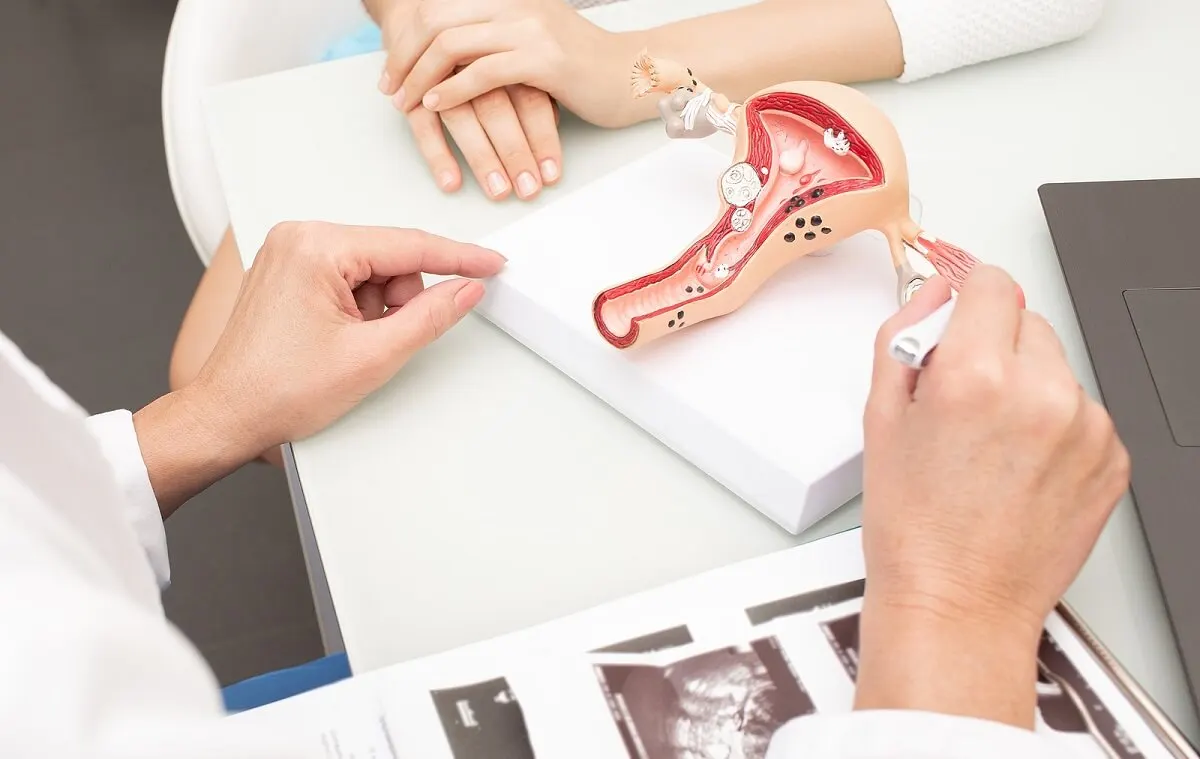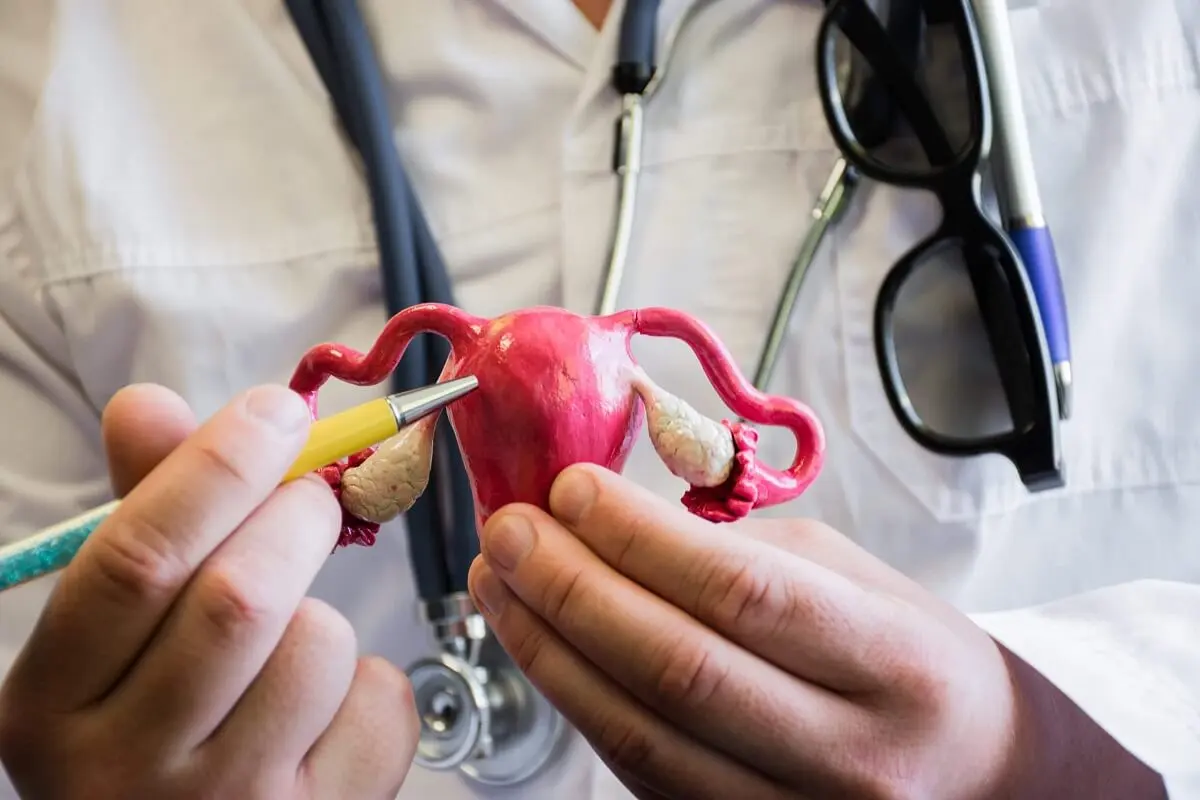Septate or Septate Uterus: Pregnancy Complications


Reviewed and approved by the nurse Leidy Mora Molina
The uterus is referred to as septate or a septate uterus when this organ is divided into two parts by a membrane which is called a “septum”. This condition is present at birth and can only be corrected by surgery.
Congenital uterine anomalies are present in about 4% of women. This particular one accounts for between 30% and 90% of such irregularities. In this context, it can be said to be a very common problem.
However, its presence can lead to complications during pregnancy. In particular, it brings a risk of miscarriage ranging from 25% to 47%. Of course, there are also other complications. In the following article, we’ll take a look at them.
What is a septate or septate uterus?
The septate or septate uterus is a congenital malformation in which there’s a membrane that runs through the entire organ, dividing it into two parts. This membrane – called a septum – runs from the upper part of the uterus and can reach the cervix or even the vagina.
Under normal conditions, the uterus is a hollow organ in the shape of an inverted pear. If it’s septate, it has not one, but two cavities. Many women may have this abnormality without knowing it, even after pregnancy and childbirth. It is usually only detected when it causes problems, especially recurrent miscarriages.
The septate or septate uterus can be of three types:
- Partially septate: This occurs when the septum doesn’t reach the cervix.
- Complete septate uterus: If the septum reaches the cervix.
- Septate uterus and vagina correspond to cases in which the septum extends into the vagina.

Symptoms
Most women with septate or septate uterus have no symptoms. As noted above, this abnormality is most often only detected when a study is done to identify the cause of recurrent miscarriages.
It’s very rare for it to be diagnosed before puberty. In any case, it is possible that more painful menstruation than normal may occur after puberty. However, it’s very common to normalize the pain or attribute it to other causes.
It’s also possible to experience pelvic pain before or after menstruation. In addition, the use of a tampon may not be sufficient to prevent the leakage of menstrual blood.
These symptoms are usually mild and therefore often go unnoticed.
Causes
Septate or septate uterus is a genetic anomaly and experts still don’t know what causes it. Hypotheses suggest that it occurs during embryonic development. There are two ducts, called “Mullerian ducts”, which, under normal conditions, join together to form the uterus.
Usually, the fallopian tubes are formed first, along with the uterus. After this process, there remains a membrane, or septum, which is reabsorbed by the body. If this doesn’t happen, the tissue remains in the uterus and the two cavities form.
We think you may be interested in reading this, too: Vagal Response in Pregnancy: What Is It and How to Prevent It?
The effects of a septate uterus on pregnancy
A septate uterus isn’t necessarily a problem. It doesn’t always cause health complications, nor does it always prevent a normal pregnancy or delivery. Even so, this is a risk factor in some cases.
Although it doesn’t affect sexual life or fertility, it’s a fact that this type of uterus increases the risk of miscarriage, especially during the second trimester of pregnancy. It’s also possible that it may generate difficulties, such as the following:
- The position of the fetus: When there is a septate uterus, the baby is more likely to be in a “breech” position at birth. This is because it has less room to rotate with its head down.
- Cesarean section: Because of the improper positions of the fetus, there’s a greater likelihood of having a cesarean delivery.
- Premature delivery: There’s a greater risk of delivery before 37 weeks of gestation, with all that this implies.
- Low birth weight.
- It has been found that women with a septate uterus are more likely to develop endometriosis.
Diagnosis
Because a septate uterus doesn’t usually cause symptoms, it’s very common for it to go undiagnosed. Sometimes, it’s detected in a routine examination, but in most cases, it’s only identified after several miscarriages.
It’s common for the physician to do a pelvic examination first. But unless it’s a case of septate uterus and vagina, such a clinical examination doesn’t allow a diagnosis to be made. The best way to identify it is with imaging tests, such as the following:
- An ultrasound
- Magnetic resonance imaging
- Hysteroscopy
These tests make it possible to determine the length and thickness of the septum. Other similar conditions should be ruled out during diagnosis, such as bicornuate uterus, in which the uterus is not traditionally shaped like an inverted pear, but like a heart, but without a septum.
Treatment
This condition only requires treatment if it causes problems such as recurrent miscarriages or excessive pain. Many women with this anomaly have normal pregnancies and deliveries, either naturally or as directed by a physician.
The treatment for this malformation is surgery. It isn’t recommended for adolescents, asymptomatic women, or women who don’t want to have children. The usual procedure is called “hysteroscopic metroplasty” and consists of removing the septum.
This is an outpatient surgery in which a device is inserted into the uterus – through the cervix – and the tissue is cut. It takes between 30 and 60 minutes. It’s usually a safe procedure. However, it rarely involves some risks such as the following:
- Poor reaction to anesthesia
- Infection
- Abnormal bleeding
- Damage to the cervix
- Damage to the uterus

Like this article? You may also like to read: Why Do False Negative and False Positive Pregnancy Tests Occur?
Final recommendations
Most women who undergo surgery to correct a septate uterus go on to have a normal pregnancy. The success rate is estimated to be 53.5%. Postoperative complications are very rare.
If a pregnant woman has this condition she should follow all professional recommendations. She should contact her doctor if she experiences vaginal bleeding, pelvic cramps, contractions, or rupture of membranes.
All cited sources were thoroughly reviewed by our team to ensure their quality, reliability, currency, and validity. The bibliography of this article was considered reliable and of academic or scientific accuracy.
- Rikken J, Leeuwis-Fedorovich NE, Letteboer S, Emanuel MH, Limpens J, van der Veen F, Goddijn M, van Wely M. The pathophysiology of the septate uterus: a systematic review. BJOG. 2019 Sep;126(10):1192-1199. doi: 10.1111/1471-0528.15798. Epub 2019 May 15. PMID: 31004459.
- García León, F., Kably Ambe, A., Meden, W. V. D., Dosal, M., & Escarcega, H. (1998). Utero septado con duplicación cervical y tabique vaginal: una malformación rara. Ginecol. obstet. Méx, 489-91.
- Rikken JF, Kowalik CR, Emanuel MH, Mol BW, Van der Veen F, van Wely M, Goddijn M. Septum resection for women of reproductive age with a septate uterus. Cochrane Database Syst Rev. 2017 Jan 17;1(1):CD008576. doi: 10.1002/14651858.CD008576.pub4. PMID: 28093720; PMCID: PMC6464821.
- Bendifallah, S., Silberstein, M. E., Levaillant, J. M., & Fernandez, H. (2015). Malformaciones uterovaginales y fertilidad. EMC-Ginecología-Obstetricia, 51(3), 1-12.
- Dilbaz, B., Mert, S. A., Diktas, E. G., Kose, C., & Ustun, Y. E. (2022). The effect of hysteroscopic metroplasty on fertility in T-shaped and Y-shaped dysmorphic uterus. In The European Journal of Contraception & Reproductive Health Care (pp. 1–6). Informa UK Limited. https://doi.org/10.1080/13625187.2022.2085681
This text is provided for informational purposes only and does not replace consultation with a professional. If in doubt, consult your specialist.








